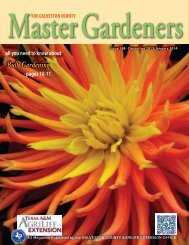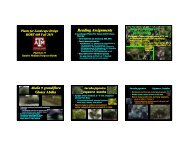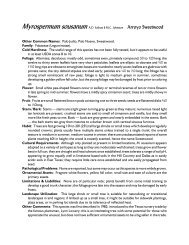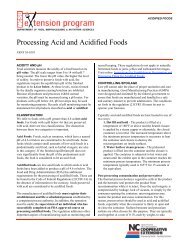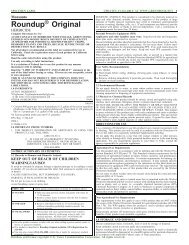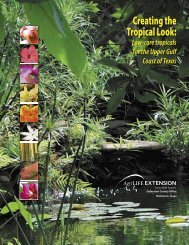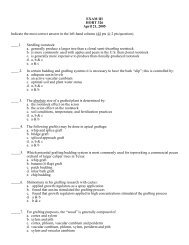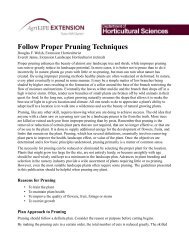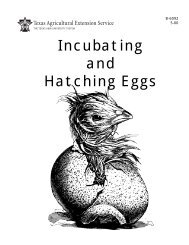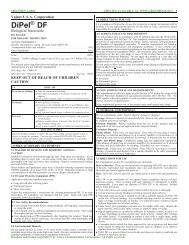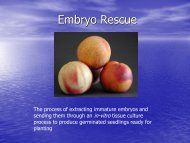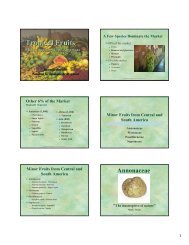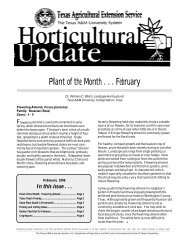Guide to PAS 2050 How to assess the carbon ... - Aggie Horticulture
Guide to PAS 2050 How to assess the carbon ... - Aggie Horticulture
Guide to PAS 2050 How to assess the carbon ... - Aggie Horticulture
You also want an ePaper? Increase the reach of your titles
YUMPU automatically turns print PDFs into web optimized ePapers that Google loves.
10<br />
Section II: Calculating product <strong>carbon</strong> footprints<br />
1<br />
2<br />
Process map<br />
Boundaries and<br />
prioritisation<br />
] Build process map of product’s life cycle, from raw<br />
] materials <strong>to</strong> disposal, including all material, energy<br />
] and waste flows<br />
] Confirm boundaries and perform high-level<br />
] footprint calculation <strong>to</strong> help prioritise efforts<br />
Update process map<br />
with new information<br />
3<br />
Data<br />
] Collect data on material amounts, activities and<br />
] emission fac<strong>to</strong>rs across all life cycle stages<br />
4<br />
Calculation<br />
] Calculate <strong>the</strong> product <strong>carbon</strong> footprint<br />
5<br />
Uncertainty<br />
] Assess precision of <strong>the</strong> footprint analysis<br />
Five steps <strong>to</strong> calculating <strong>the</strong> <strong>carbon</strong> footprint<br />
Step 1: Building a process<br />
map<br />
The goal of this step is <strong>to</strong> identify all materials,<br />
activities and processes that contribute <strong>to</strong> <strong>the</strong> chosen<br />
product’s life cycle. Initial brains<strong>to</strong>rming helps <strong>to</strong> build<br />
a high-level process map that can <strong>the</strong>n be refined<br />
through desk<strong>to</strong>p research and supply chain interviews.<br />
The process map serves as a valuable <strong>to</strong>ol throughout<br />
<strong>the</strong> footprinting exercise, providing a starting point for<br />
interviews and a graphical reference <strong>to</strong> guide both<br />
data collection and <strong>the</strong> footprint calculation.<br />
To develop a product process map, start by breaking<br />
down <strong>the</strong> selected product’s functional unit in<strong>to</strong> its<br />
constituent parts (e.g. raw materials, packaging) by<br />
mass using internal expertise and available data or<br />
desk<strong>to</strong>p research. A product specification or bill-ofmaterials<br />
is a good starting point. Focus on <strong>the</strong> most<br />
significant inputs first, and identify <strong>the</strong>ir respective<br />
inputs, manufacturing processes, s<strong>to</strong>rage conditions<br />
and transport requirements.<br />
In practice <strong>the</strong>re are considerable benefits <strong>to</strong> repeating<br />
<strong>the</strong> process map step (Step 1 above) as understanding<br />
of <strong>the</strong> life cycle improves, allowing greater prioritisation<br />
and focus. For example, in Step 2 a high-level footprint<br />
can be calculated with estimates and readily available<br />
data before fully investing in data collection. This<br />
approach enables prioritisation based on highest<br />
impact emission sources ra<strong>the</strong>r than spending time on<br />
small or ‘immaterial’ (less than 1% of overall life cycle<br />
emissions) contribu<strong>to</strong>rs.<br />
Process map steps<br />
Business-<strong>to</strong>-consumer (B2C)<br />
When calculating <strong>the</strong> <strong>carbon</strong> footprint of B2C goods,<br />
typical process map steps include those illustrated<br />
opposite. From raw materials, through manufacture,<br />
distribution and retail, <strong>to</strong> consumer use and finally<br />
disposal and/or recycling.<br />
Business-<strong>to</strong>-business (B2B)<br />
Business-<strong>to</strong>-business <strong>carbon</strong> footprints s<strong>to</strong>p at <strong>the</strong><br />
point at which <strong>the</strong> product is delivered <strong>to</strong> ano<strong>the</strong>r<br />
manufacturer, consistent with <strong>the</strong> ‘cradle-<strong>to</strong>-gate’<br />
approach described in BS EN ISO 14040 3) . The B2B<br />
3)<br />
BS EN ISO 14040, Environmental mamagement — Life cycle<br />
<strong>assess</strong>ment — Principles and framework.



